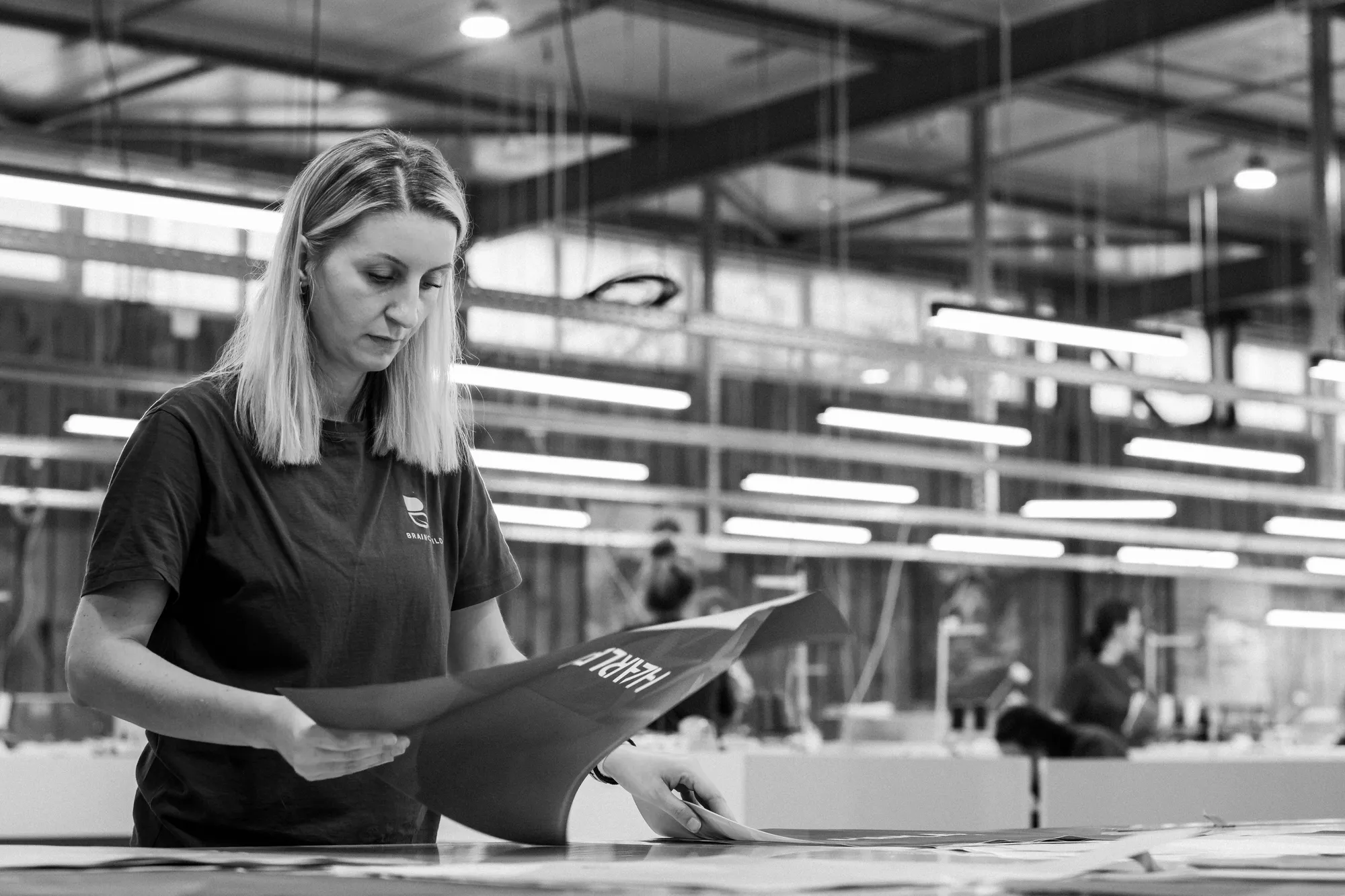
We get asked to visit kite companies all the time. We avoid it at-all-costs, because it’s usually a ‘warehouse tour’, where you get to look at stacks and stacks of boxes of stuff you don’t want.
This time was a bit different. Ralf’s Brain Child factory in eastern europe, is set to turn our kite world upside down. We asked to go.
What’s remarkable about Brain Child, and what we learnt from hanging out there for the day:
-
The Kites are lighter. Way lighter. Which increases performance hugely, if the shape is excellent, too. But, what is most surprising is that Brain Child kites (currently) have Dacron leading edges. Dacron is what every Kite has been made out of the the past 20 years. It is durable. Easy to work with. Blah Blah Blah. But muuur, how the fck are they lighter than their Aluula competitors? When the heaviest component of the kite still contains the heaviest material?*
Answer: It’s the whole package. The rest of the kite is super light. So light, that a Brain Child 140g/m Dacron leading edge still beats the Duotone Evo D\Lab on weight. Wtf.
2. The Kites are crispier. But not like a new 2-man tent (traditional canopy material). More like stiff paper, or card. Feel one when you next see one. They also sound completely different to anything else. Essentially, it’s stiffer. You know when your kite flutters when it is pumped up on the beach? These rattle.
3. It has cost $3million so far. 33% of which was Ralf’s cash. After two years, the factory is breaking even. Plans are to expand x10, which will require a futher $20million in investment.
4. There’s a Brain Child sewing school. The goal is to find talent to work in the factory. The by-product is that everyone in the local town of Bitoli gets a free two week sewing course. Kinda sick.
5. Yes, the materials are innovative and lighter everything, but the magic sauce is in the construction. Ralf has developed two break-throughs:
a) Printing on X. No one else has figured out how to do it. Ralf can print whatever you want on a Kite. Until now, you’ve had to design the graphics, thinking about what colours of canopy are available, and sewing it all together. Like when school kids make a mosiac out of magazine materials. Now, you can just print straight on top. Like when school kids use a printer.
b) The ProWeld seams. Traditionally, you get two bits of cloth, make them overlap a bit, fold it, and then sew the seam. This wastes material, and sticks lots of little holes in the canopy. At Brain Child, the two bit of canopy are placed next to eachother, without overlap. A ProWeld seam then goes over the top of both, joining them together.
Oh but muuuuur, I can see a line of sewing over the top of the weld. Are they therefore not just sewn, and this is just a marketing stunt?
Answer: Nice spot, but you are wrong. The sewing that you see on a Brain Child canopy is merely reinforcement, to protect the seam from salt and sand. It is minimal. The weld not only uses less material, but it also provides useful stiffness, giving the kites their snappy feel.
6. Ralf is Confident.
We pressed him on whether he’ll ever top his masterpiece: Evo D\Lab. Or whether he’s concerned about the likes of Gong, undercutting everyone. He doesn’t seem phased. At all. He calmly explains that these mentioned products might be more expensive or way cheaper, but they are not better value.
Brain Child’s sole aim is to make better equipment at a better price point. And if this is achieved, he kinda can’t lose, right?
7. Alex from Harlem has massive bollocks
Now, I realise we don’t have a reputation for high brow journalism here, but even for us that header is a bit much. However, it’s justified. This dude went all in on Brain Child 14months before anyone else. And as a result, there are far
............................. lees verder op: https://portraitkite.com/articles/we-flew-to-brain-child-what-we-learnt/














